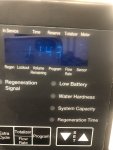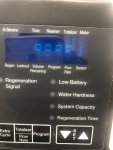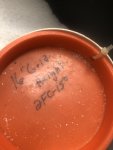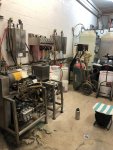Well…
Your decision to repair or replace. I would suggest spending 1st money on a new system. Every dollar you spend attempting to resuscitate a 20+ year old system, (with parts availability issues) might be better spent on a modern replacement. Plus, you’ll reduce hair pulling, hand-wringing, and sleeplessness while saving significant brain cells.
Also, do you really want to spend endless hours learning how the insides of a water softener works?
From the movie Kelly’s Heroes:
Big Joe: Well then, why the hell aren't you up there helping them? [fix the tank]
Oddball: answers: (laughs) Oh man, I only ride ‘em, I don't know what makes ‘em work.
Just to give some insight, those 2-piece 2900 valves were re-cast as a single piece in the middle of 2005. The new, recast version is the 2900s which has a much higher backwash rate allowing for it to be used on larger tank sizes. They use different upper pistons and most use the same lower piston, although the lower piston may look different.
The 1990s electronics were confusing and difficult to program. The NXT2 controllers are much more intuitive, simpler to program and adjust.
The 20+ year old resin has likely given most of it’s softening capacity…the stuff does have a life expectancy. And, on chlorinated municipal water that life span is typically less than 20 years…maybe less than 10 years under severe service conditions. A new, properly setup system, with fresh 10% crosslinked resin will significantly reduce salt consumption and provide you with years of quality sleep.










